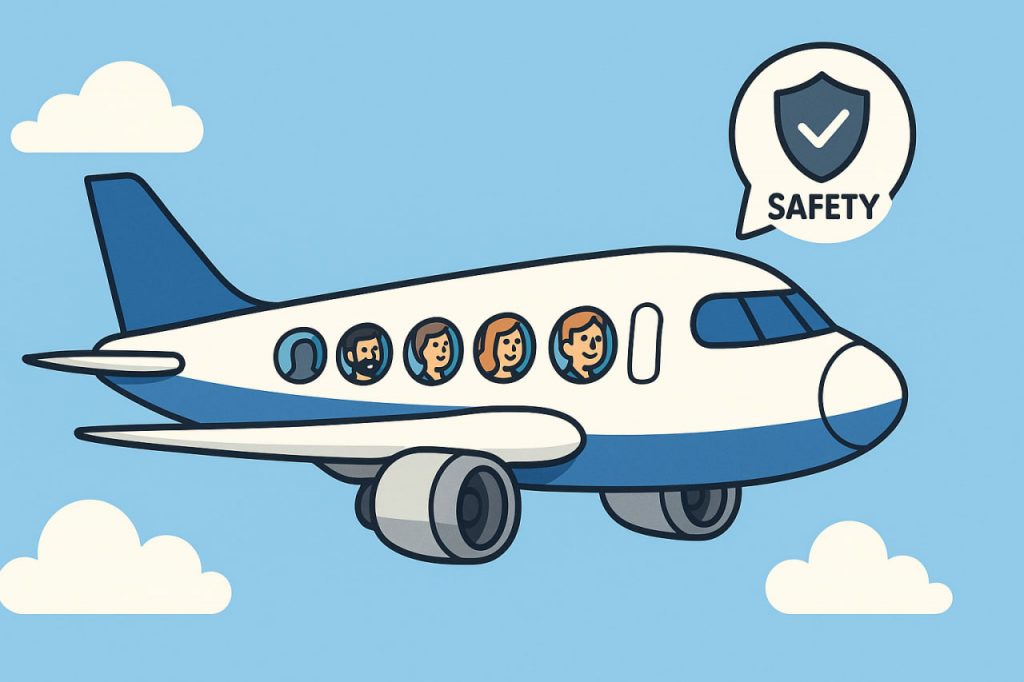Air travel today is considered one of the safest forms of transportation. Statistically, flying is far safer than driving a car. Modern commercial aircraft are designed with multiple backup systems, advanced technology, and strict maintenance routines to minimize risks.
Technological Advancements
Modern airplanes are equipped with automated navigation systems, weather radar, collision-avoidance systems, and advanced communication tools. Aircraft materials and engine designs have improved to make flights more reliable and fuel-efficient. Pilots undergo rigorous training, and many systems are designed to operate even if one part fails.
Human Factor and Pilot Training
While technology is critical, pilots remain central to flight safety. Airline pilots must complete thousands of training hours and continuous refresher courses. Simulators prepare them for emergency scenarios, from engine failures to sudden turbulence. Strict rest requirements also reduce risks of fatigue.
Common Myths About Flying
One common myth is that turbulence is dangerous. In reality, turbulence is uncomfortable but rarely threatens flight safety. Another myth is that planes frequently crash due to technical problems. Modern aircraft are inspected before nearly every flight, and strict international safety standards make catastrophic failures extremely rare.
Statistics of Air Travel Safety
According to the International Air Transport Association (IATA), the chance of being in a fatal aviation accident is less than 1 in several million flights. By comparison, road accidents claim over 1 million lives annually worldwide. This highlights the relative safety of modern aviation.
Emerging Risks
While traditional risks are minimized, new challenges such as cybersecurity threats, climate change (stronger storms, changing flight patterns), and drone interference are being closely monitored by aviation authorities to ensure continued safety.
Conclusion
Flying today is exceptionally safe due to strict regulations, advanced technology, and highly trained pilots. While no form of transportation is risk-free, the chances of being harmed in an airplane accident are extremely low compared to other modes of travel.
Unfortunately, in recent years, there have been more frequent cases of turbulence and clear-sky turbulence, and due to the global deterioration of the climate situation, flying has become more dangerous every year.
Interesting Facts
Statistically, the odds of dying in a commercial plane crash are estimated at about 1 in 11 million, far lower than in car travel or even household accidents. Modern aircraft are equipped with redundant safety systems, real-time diagnostics, and advanced autopilot technologies that can handle most emergency scenarios. Pilots undergo continuous simulator training, and every flight is monitored by air traffic control and satellite-based navigation. Interestingly, the rate of fatal aviation accidents has dropped by over 90% since the 1970s, thanks to improvements in engineering, human factors, and international safety standards. Even turbulence, which often causes anxiety, rarely poses structural danger to planes. When incidents do occur, they are meticulously investigated, and the findings lead to global safety reforms. In short, air travel today is not just efficient — it’s a remarkable example of how technology and human skill have made the skies safer than ever before.
Glossary
- Turbulence – irregular air movement causing shaking during flight.
- Navigation system – technology guiding an aircraft’s route.
- Collision-avoidance system – onboard system preventing aircraft collisions.
- Cybersecurity – protection from digital threats and hacking.
- Maintenance – technical inspection and repair of aircraft.


